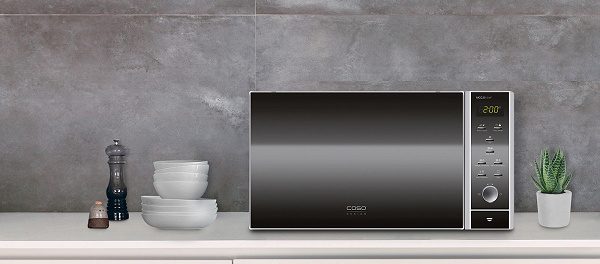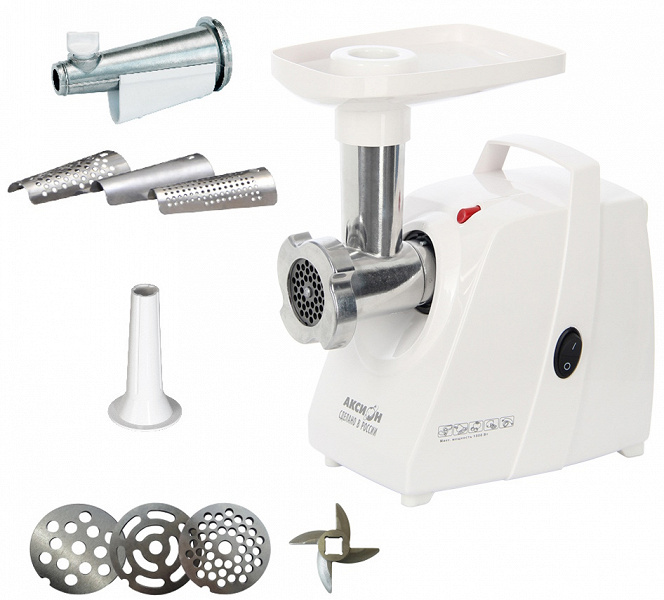Combination appliances for the kitchen: real savings or tricks of marketers?

It seems that the extra features of technology can’t be superfluous – more is not less, it comes in handy! However, according to the observations of our dog-eat-dog editorial board, this is not always the case. Rather, on the contrary: it is rare to find a combined technique invented not to follow the trend for versatility, but to solve a problem that was not previously solved or solved in a more complicated way. Let’s deal with the 2-, 3-, 4-in-1 technique based on editorial experience: whether it’s needed, and if so, who needs it and in what situation.
Table of contents
- Microwave ovens with oven function (convection mode)
- Ovens with microwave and steam cooking function
- Mini ovens with cooking zones
- Cucumber grinders, meat grinders, meat slicers
- Soup blenders and steam cookers
- Breakfast machines
Microwave ovens with oven function (convection mode)
Microwave ovens, in which you can not only heat up, but also fully cook, appeared on the Russian market a long time ago, but most users still perceive the microwave as a technique for heating and defrosting. The function of the oven is implemented in multifunctional microwave ovens is very simple: in addition to the microwave emitter, the oven chamber has a fan and a fan that provides forced convection.
As a rule, these models also have a grill. Management of these microwave ovens is always electronic, and the oven mode can be used in various combinations with microwaves (this helps speed cooking, but is not suitable for all products) or separately – for example, for classic baking. The cooking temperature is always continuously adjustable and starts at 40-50 degrees (which means you can stand dough, make yogurt, ferment, toast in such an oven). A relatively small chamber volume increases the speed of baking compared to a conventional oven. Microwave with convection has no disadvantages, except if you pay more for it, and you will not use this mode.
Verdict: a cool thing, really allows you to do without an oven in a small (1-3 people) household, and with a larger number of people will help as an additional kitchen appliance. Ideal for rental housing where you’re not happy with a stove or oven. Does not require a three-phase electrical connection (unlike some electric stoves and ovens).
Ovens with microwave and steam cooking function
Seems to be the same – but it’s not. Ovens with microwave and steam modes are mostly premium built-in appliances. The owner of such an oven doesn’t need to buy extra tabletop appliances – microwave, steamer. Multifunctional ovens can cook on several levels and combine heating and steam modes, and the capabilities of the oven itself are always at the highest level. Here the question is not whether you can do without such a device: he simply can not afford most buyers, and arrange a steamer in a regular microwave is not a problem (solved by buying a plastic steamer for the microwave). Minus, except for the price, one: you will not have a separate oven and microwave, so you can not use them in parallel.
The verdict: a great solution for those who equip their kitchen with built-in appliances, are not strapped for cash and want to minimize the number of devices that take up space on the working surfaces.
Mini ovens with burners
More and more often you can see electric mini-stoves with burners on the top panel on sale. Such devices are on all kinds of lists of “must have for dacha” appliances – and are really useful in the country, especially in the summer house. Such a device can be brought for the season and take away, it does not require three-phase connection and is quite able to cope with simple culinary tasks: the whole goose in it will not cook, but a small pizza, pie, casserole, meat and vegetables – quite possible. And you don’t need to buy a stove separately: here it is, on top. Recently, mini-stoves have been on sale not only with “pancake” burners, but also with glass-ceramic.
There is only one nuance, which is often not taken into account by buyers of such stoves and to which then complain in reviews: the total capacity of both burners and oven can exceed the meager dacha limit, and in this case you can not use them simultaneously.
The verdict: a great thing if you do not expect it to cook, fry and bake at the same time.
Meat mincer-juicer, meat mincer-slicer
Photos and videos show us these meat grinders standing proudly among pans of cutlets, bowls of salads, and pitchers of freshly squeezed juices. “Soon there will be nothing but meat grinders,” thinks the positively charged consumer and presses the “buy” button. What does he get in reality? Yes, in general, all that is promised: this device chops meat properly, cuts and grinds vegetables and juices. But if there are no questions to the first, then the cylindrical nozzles-grinders and cone juicers often receive complaints.
First, they need storage space comparable to the space for another appliance – this often turns out to be a surprise. Secondly, in drum-type graters and choppers, regardless of the model and manufacturer, there is always quite a lot of unprocessed parts of vegetables, so it makes sense to use such cylinders only for large quantities of products. In addition, the assembly-disassembly-wash-dry nozzles takes time and effort, and the “output” if you need to prepare a bowl of salad or 2 liters of soup will be minimal. Third, not everyone is satisfied with the low speed of juice extraction screw (but what else – in the meat grinder?!) Juicer. But the juice is thick, homogeneous, and cake – almost dry, and squeeze the juice can be almost anything: berries, greens, watermelon, pomegranate, citrus.
But the fast processing of, say, a bucket of dacha apples is out of the question: this feat requires a centrifugal juicer, and to prepare a small glass of orange fraiche to mess with the assembly-disassembly unit is not worth it.
The verdict: for processing vegetables in large quantities such a device is suitable, but not for making juices (although you can make juice for the family for breakfast).
Soup blenders and steam blenders
Devices in which you can cook and at the same time chop vegetables, sauce or soup, really solve the problem, which before their emergence was beyond the reach of any single appliance. For lovers of puree soups and for people in need of a dietary diet, such a device is the way out, but you have to understand its limitations. For example, they do not boil boiled broth as in the multicooker or on the stove, and do not roast vegetables before cooking. But blenders and soup cookers can be used to prepare special dishes that will not turn out simply in a pot: say, soy and nut milk.
But a similar and working on the same principle device – a steamer blender with a small bowl – is ideal and indispensable for the preparation of baby food. First, the products are steamed and then crushed in the same container: hygienic, fast, convenient, allows great savings on the purchase of ready baby puree and be sure of the freshness, composition and taste of baby food.
The verdict: this technique is only suitable for cooking light dietary and baby food. But for the latter it is irreplaceable.
Breakfast machines
In English, these units are called breakfast makers, but our sellers have not agreed on how these devices, which combine the functions of a stove, mini oven, toaster and even a drip coffee maker, should be called. The device is supposed to cook many different dishes for the whole family at the same time (!): fry eggs, omelets and sausages, cook porridge, make toast, hot sandwiches, dessert and coffee. It all looks very attractive in pictures, but most of the reviews on such devices are extremely disappointing. What’s wrong with them (not the reviews)?
The most common complaint is the lack of power for heating. And indeed, if the total power consumption is 800-1250 watts, and part of it (for example, 400 watts, as it says in the description of one of these devices) goes to the work of the coffee machine, then what is left for the oven and stove? Will they be able to cook something, and even more so fast, and even more so at the same time? Practice shows that no.
The second point, which is not obvious when looking at the advertising picture: all this food does not materialize in the kitchen out of nowhere: it has to be prepared. Sophisticated sandwiches, fancy buns, wholesome porridge, and scrambled eggs and vegetables don’t cook all at once – everything requires preparation of ingredients. Combine that with slow cooking and you get two hours of wasted time.
The verdict: in every kitchen there are traditional devices with which you can cook breakfast faster and which will not look at you with reproach: they say, but more tartlets with stuffing and cheese are not baked, as in the picture showed.
***
Combination appliances for the kitchen most often can not one hundred percent replace full-size, but are well suited for some specific or unusual tasks. However, in the pursuit of space and time savings, you can fall into the traps of marketers.












Leave a comment